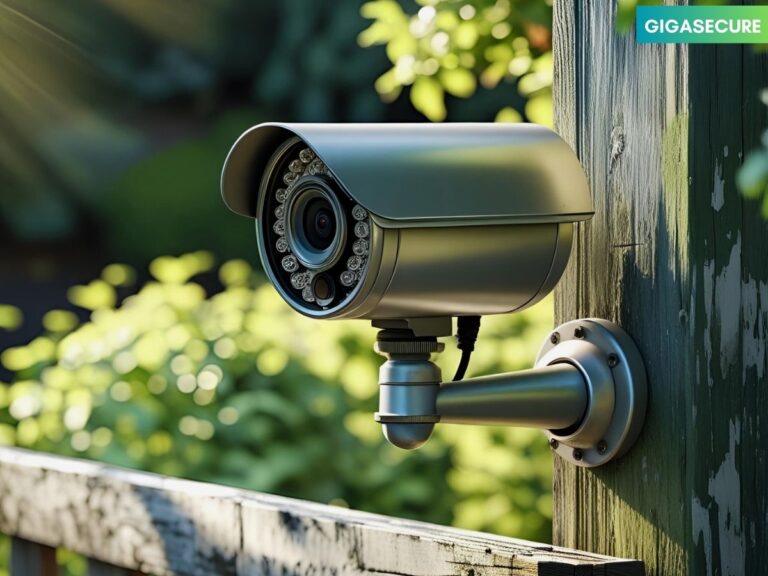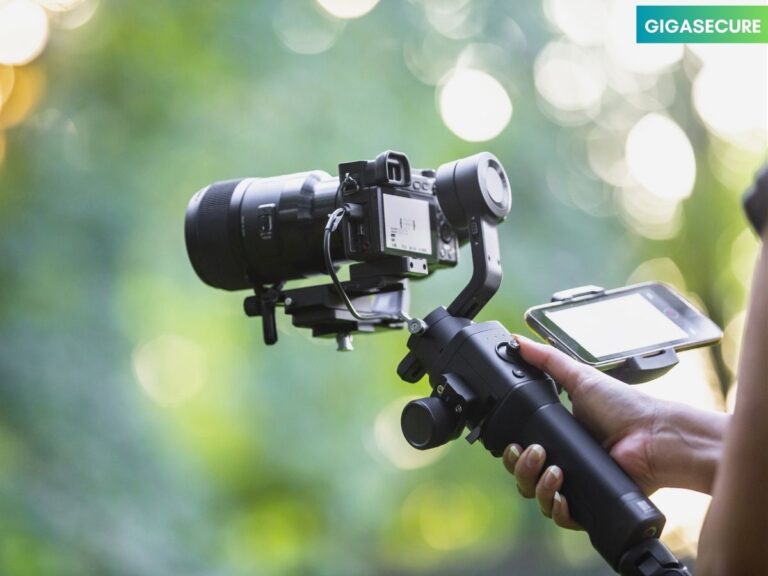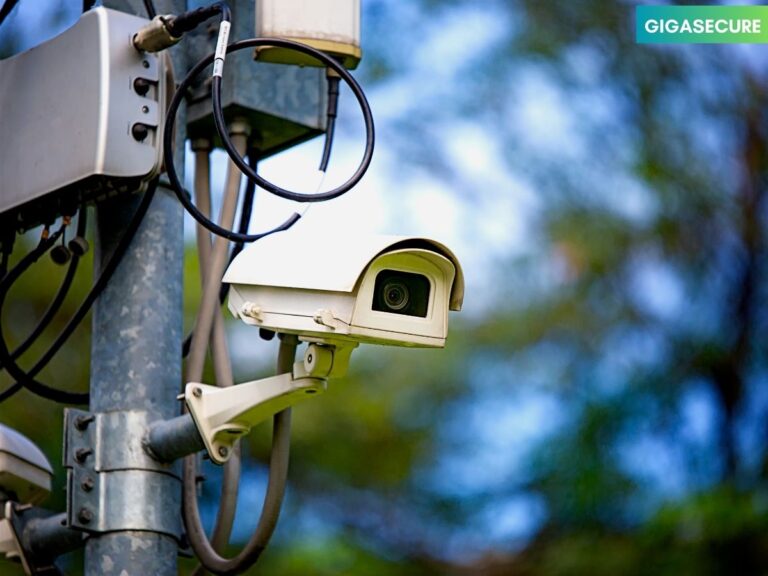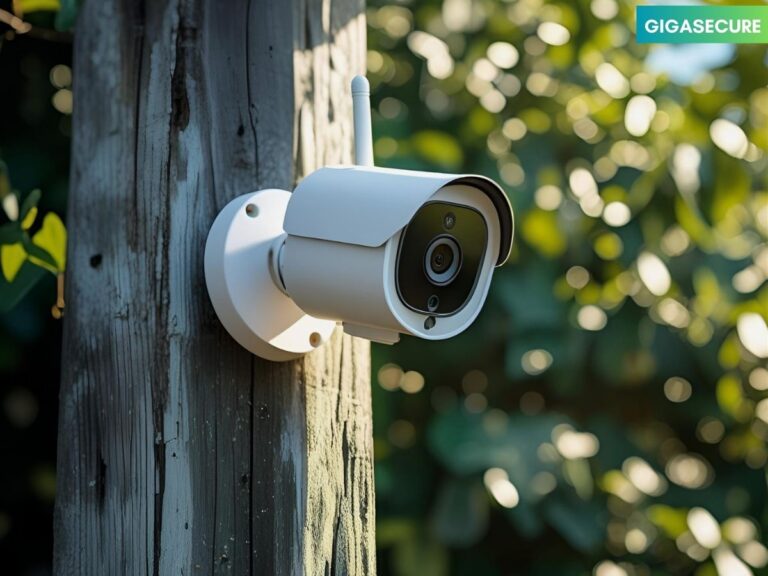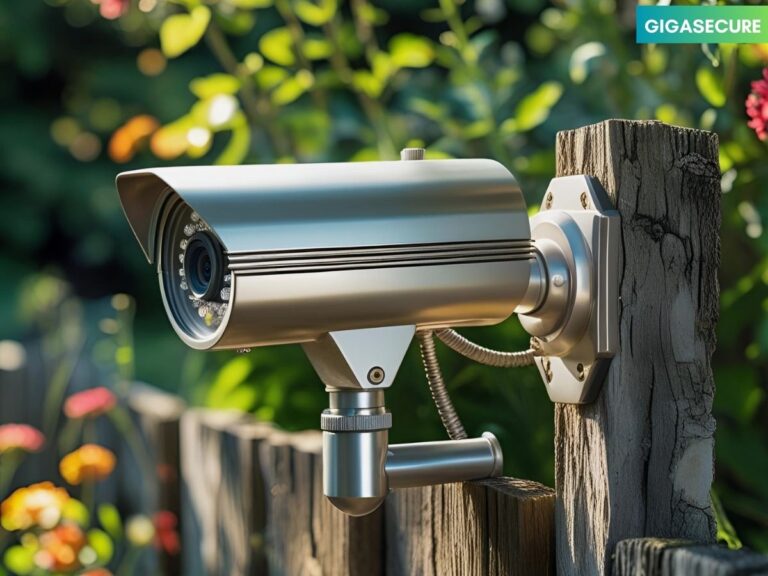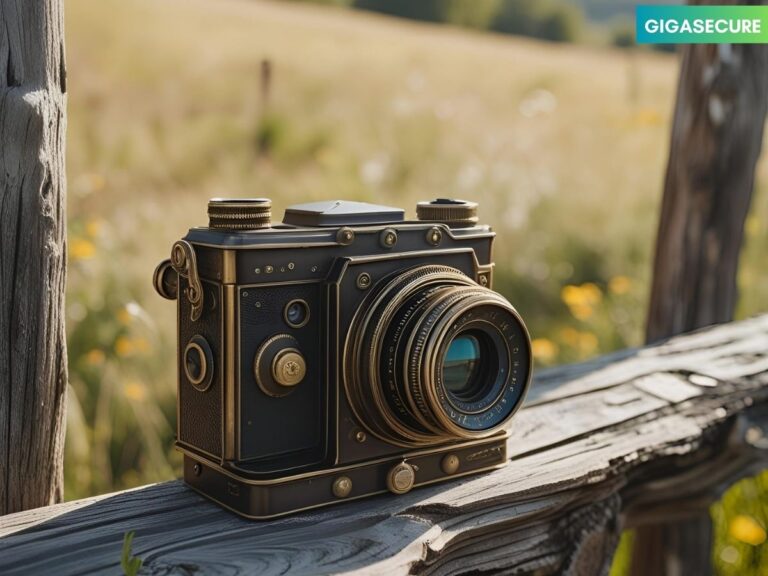How Outdoor Cameras Deter Crime and Improve Safety?
Feeling safe at home is very important. With more home security worries, finding good ways to protect your place and family is key.
Installing outdoor security cameras is a popular choice. These cameras scare off intruders and let you keep an eye on your surroundings.
Putting up crime prevention cameras makes your home safer. You can place them around your property to catch any odd activity. This way, you can relax knowing your home is being watched and you have a crime-fighting tool.
Key Takeaways
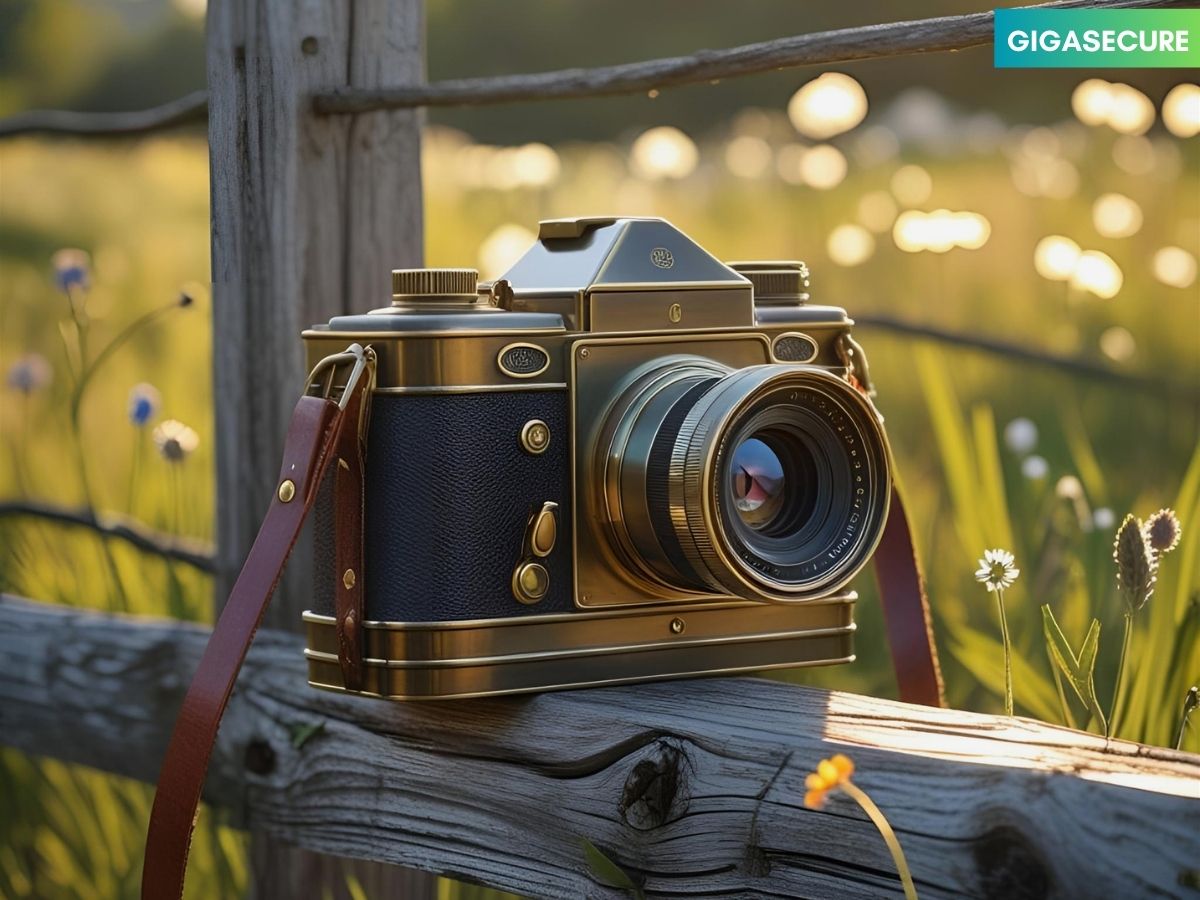
The Growing Need for Home Security
Crime rates are going up, and homeowners are looking for ways to keep their homes safe. Home security is very important. It’s key to know what’s happening now to make smart choices.

Current Crime Statistics in the United States
Crime numbers in the U.S. are alarming. The FBI says there were 7.7 million property crimes in 2020.
That’s 2,208.2 crimes for every 100,000 people. Burglary made up about 33.5% of these, often when homes are empty.
| Crime Type | Number of Crimes | Rate per 100,000 |
|---|---|---|
| Burglary | 1,117,696 | 341.4 |
| Larceny-theft | 5,677,649 | 1,735.4 |
| Motor Vehicle Theft | 721,885 | 220.8 |
The Psychological Impact of Feeling Secure
Feeling safe at home is very important for our minds. It lowers stress and makes us feel more at ease. Things like surveillance cameras can make us feel safer.

Proactive vs. Reactive Security Measures
Homeowners can choose to be proactive or reactive. Proactive steps, like cameras and alarms, try to stop crime before it starts. Reactive steps deal with crime after it happens. Being proactive helps keep homes safer.
In short, knowing why home security is important is vital. Looking at crime stats, how feeling safe affects us, and the types of security measures helps us protect our homes well.
How Outdoor Cameras Deter Crime and Improve Safety
Outdoor cameras are key in stopping crime and making homes safer. By putting these cameras up, homeowners can cut down the chance of crime on their property.
The Visibility Factor: Why Criminals Avoid Cameras
Outdoor security cameras are a big reason why criminals don’t target a place. Seeing cameras makes them think twice because they know they’re being watched. This is a big help in stopping burglaries and vandalism.

Research-Backed Evidence of Deterrence
Studies prove that security cameras really help lower crime rates. Places with cameras have fewer crimes. This shows how good cameras are at keeping crime away.
Beyond Deterrence: Documentation for Law Enforcement
Outdoor cameras do more than just scare off criminals. They also help police solve crimes. If a crime happens, the footage can help catch the bad guys. This makes cameras even more important for safety and fighting crime.
The Psychology Behind Crime Deterrence
To stop crime, we need to know what makes criminals decide to act. Homeowners can use this knowledge to make their outdoor cameras more effective.
Risk vs. Reward: A Criminal’s Perspective
Criminals weigh the risks against the rewards when deciding to commit a crime. Seeing surveillance cameras makes them think twice. I’ll explain how crime deterrent technology can change this balance.
The Power of Perceived Surveillance
Outdoor cameras make people feel like they’re being watched, even if no one is. This feeling can stop criminals from acting.

Creating a Security-Conscious Neighborhood
Installing cameras and showing them off helps make a neighborhood safer. This teamwork boosts home safety solutions. It makes places less appealing to criminals.
In summary, knowing why cameras work is vital for better home security. By using the right strategies, homeowners can make their homes safer.
Types of Outdoor Security Cameras for Different Needs
Outdoor security cameras come in many types, each for different needs. Knowing these differences helps pick the right camera for your home.
Wired vs. Wireless Options
Choosing between wired and wireless cameras is key. Wired cameras connect directly to your home’s power and network, giving a stable connection. But, they’re harder to install.
Wireless cameras are easier to set up and don’t need cables. Yet, they rely on batteries or need to be charged often.Key Considerations:
- Reliability and stability of connection
- Ease of installation
- Power source and battery life

Solar-Powered Solutions
Solar-powered cameras are green and save money by using sunlight. They’re great where it’s sunny a lot. But, they might not work well in cloudy or dark places.
Smart Cameras with AI Capabilities
Smart cameras with AI add a lot to home security. They can recognize faces, detect motion, and alert you to odd activities. They can tell the difference between people, animals, and cars, cutting down on false alarms.
Budget-Friendly vs. Premium Options
Cameras range from cheap to expensive, with prices reflecting features. Cheap cameras offer basic security. But, pricey ones have better resolution, wider views, and more AI features.
Specialty Cameras: PTZ, Floodlight, and Doorbell
Special cameras like PTZ, floodlight, and doorbell cameras have unique features. PTZ cameras can move and zoom for full coverage. Floodlight cameras scare off intruders with bright lights. Doorbell cameras let you see and talk to visitors.
| Camera Type | Key Features | Best For |
|---|---|---|
| Wired | Reliable connection, complex installation | Homes with existing infrastructure |
| Wireless | Easy installation, battery dependent | Homes without extensive wiring |
| Solar-Powered | Eco-friendly, cost-effective | Sunlight abundant areas |
| Smart/AI | Advanced features, facial recognition | Enhanced security needs |
Knowing about outdoor security cameras helps homeowners choose the best for their homes.
Essential Features That Maximize Security
To make your outdoor camera effective, knowing key features is important. When picking an outdoor security camera, certain features boost its crime-deterrent power and safety.
Night Vision and Low-Light Performance
A camera’s night vision is key. Look for ones with infrared or night vision. These illuminate areas without being seen.
Motion Detection and Smart Alerts
Motion detection alerts you to threats. Smart alerts send notifications to your phone or tablet. This keeps you updated.

Weather Resistance and Durability
Outdoor cameras face many weather conditions. Make sure your camera is IP66 or higher rated for weather resistance.
Storage Options: Cloud vs. Local
Choose between cloud storage or local storage like SD cards or DVRs. Each has its own cost, security, and convenience benefits.
Two-Way Audio and Sirens
Two-way audio lets you talk to visitors or scare off intruders. Some cameras have sirens that can be turned on remotely to scare off threats.
| Feature | Benefit | Consideration |
|---|---|---|
| Night Vision | Captures clear images at night | Infrared or night vision technology |
| Motion Detection | Alerts you to possible threats | Customizable sensitivity settings |
| Weather Resistance | Stands up to various weather | IP66 or higher rating |
| Two-Way Audio | Talk to visitors or scare off intruders | Audio quality and speaker durability |
Understanding and using these key features boosts your outdoor camera’s security. This makes your home safer and deters crime.
DIY Installation vs. Professional Setup
Homeowners often face a big decision when installing outdoor security cameras. They must choose between DIY or hiring a pro. This choice impacts the system’s effectiveness, cost, and upkeep.

Tools and Skills Needed for Self-Installation
DIY installation requires the right tools and skills. You’ll need a drill, screws, and maybe a ladder. Understanding networking is also key for IP cameras, as you’ll need to set them up on your network.
Key tools for DIY installation include:
- A power drill for making holes for screws
- Screws and anchors for mounting cameras securely
- A ladder for reaching high mounting locations
- A network cable (if not using wireless cameras)
- A smartphone or computer for configuring the camera settings
Power Source Considerations
Choosing the right power source is vital for your cameras. Wired cameras need a power outlet, which might mean running cables. Wireless cameras use batteries that need charging or replacing.
Think about the power source and maintenance ease when picking between wired and wireless. Solar-powered cameras are a green and possibly cheaper option.
When to Call the Professionals
DIY installation can save money and be rewarding. But, for big properties, many cameras, or complex setups, pros are better. They ensure your system works right.
If heights or electrical work scare you, get a pro. It’s safer.
Maintenance Requirements
Keeping your cameras in good shape is key, whether you installed them yourself or had a pro do it. Clean the lenses, update firmware, and check mounts and cables.
Regular maintenance tasks include:
- Cleaning camera lenses to prevent dirt and grime buildup
- Checking and updating firmware to ensure you have the latest features and security patches
- Inspecting mounts and cables for damage or wear
Strategic Camera Placement for Maximum Coverage
To get the most out of your outdoor security cameras, place them wisely. Good placement boosts your home’s security and safety.
Entry Points: Doors and Windows
Focus on doors and windows when setting up your cameras. These spots are where intruders often try to get in.
Cameras here can catch anyone trying to enter your home. Make sure the camera’s height and angle are right to avoid tampering and get a clear shot.
Blind Spots and Vulnerable Areas
Spotting blind spots and weak areas is key to using your cameras well. These might be spots hidden by plants or poor lighting. Cameras in these spots can help catch intruders and improve your surveillance.

Legal Considerations and Privacy Concerns
Think about legal and privacy issues when setting up cameras. Make sure your cameras don’t record your neighbors or public areas without permission. Know the laws in your area to avoid legal trouble.
Visible vs. Hidden Cameras
Choose between visible or hidden cameras based on your needs. Visible cameras scare off intruders, while hidden ones watch without being seen. Think about your property’s layout and security goals when making this choice.
| Camera Placement Strategy | Benefits |
|---|---|
| Entry Points (Doors and Windows) | Captures footage of intruders, keeps crime away |
| Blind Spots and Vulnerable Areas | Reduces hiding spots, improves surveillance |
| Visible Cameras | Scare off intruders, visible warning |
| Hidden Cameras | Surveillance without being seen |
By placing your cameras smartly and considering entry points, blind spots, and legal issues, you can greatly improve your home’s security. This thorough approach to surveillance brings peace of mind and protects your property.
Integrating Cameras with Complete Home Security Systems
Outdoor cameras work best when they’re part of a full home security system. A complete approach is better than just one thing. Adding cameras to other security systems makes homes safer and more secure.
Smart Home Compatibility
Modern security cameras work well with smart homes. This lets homeowners control cameras from their phones or voice assistants. It makes things easier and helps them act fast when they get a security alert.
Alarm System Integration
Linking cameras with alarms makes security stronger. If a camera spots something odd, it can set off the alarm. This keeps intruders away and tells neighbors something’s up.
Remote Monitoring and Mobile Access
Being able to watch your home from anywhere is great. With mobile access, you get alerts and can see what’s happening live. It’s really helpful when you’re not at home.

Artificial Intelligence and Future Trends
AI is changing home security. AI cameras can tell the difference between people, animals, and cars. This means fewer false alarms and better detection. As AI gets better, so will our security.
| Feature | Benefit | Impact on Home Safety |
|---|---|---|
| Smart Home Compatibility | Remote control and monitoring | Enhanced convenience and response time |
| Alarm System Integration | Dual-layered security | Increased deterrence and alertness |
| Remote Monitoring | Real-time alerts and footage | Improved security awareness |
| Artificial Intelligence | Advanced threat detection | Reduced false alarms and enhanced accuracy |
By linking outdoor cameras with a full home security system, homes become much safer. As tech gets better, so will our chances to keep homes safe.
FAQ Of How Outdoor Cameras Deter Crime and Improve Safety
How do outdoor cameras deter crime?
Outdoor cameras act as a visible deterrent. They make intruders think twice before breaking in. Studies show that criminals often avoid homes with cameras.
What type of outdoor security camera is best for my home?
The right camera depends on your needs. Look at wired or wireless, solar, or smart cameras with AI. Think about your budget, desired features, and security level.
Can I install outdoor security cameras myself?
Yes, you can install them if you have the right tools and skills. But, if you’re unsure, hiring a pro is safer. They ensure proper setup and function.
How do I choose the right features for my outdoor security camera?
Look for key features like night vision, motion detection, and weather resistance. Also, consider storage options and extra features like two-way audio and sirens.
Are outdoor security cameras weather-resistant?
Many cameras are weather-resistant, with IP65 or higher ratings. These protect against dust and water. Always check your camera’s specs to ensure it can handle the weather.
Can outdoor security cameras be integrated with my existing home security system?
Yes, many cameras can connect with your home security system. Check if your camera is compatible with your system for smooth integration.
How do outdoor security cameras impact my insurance premiums?
Installing cameras might lower your insurance costs. They reduce crime and property damage risks. Talk to your insurance provider to see if they offer discounts for homes with cameras.
Are there any legal considerations I should be aware of when installing outdoor security cameras?
Yes, there are legal aspects to consider. Respect your neighbors’ privacy and follow local laws. Always check with local authorities to ensure you comply with regulations.
Conclusion: Investing in Peace of Mind
Outdoor security cameras are a smart choice for homeowners wanting to boost their security. They help prevent crime and make homes safer. By picking the right camera, homeowners can protect their families and property well.
Crime prevention cameras play a big role in keeping communities safe. They not only scare off criminals but also help police solve crimes. This makes homes and streets safer for everyone.
Getting outdoor security cameras is a smart move for peace of mind. There are many types of cameras to choose from. By adding them to a full home security system, homes become even safer.
Installing outdoor security cameras is a smart choice for home protection. It shows homeowners are serious about keeping their homes and families safe. This step helps ensure a safer living environment for everyone.

